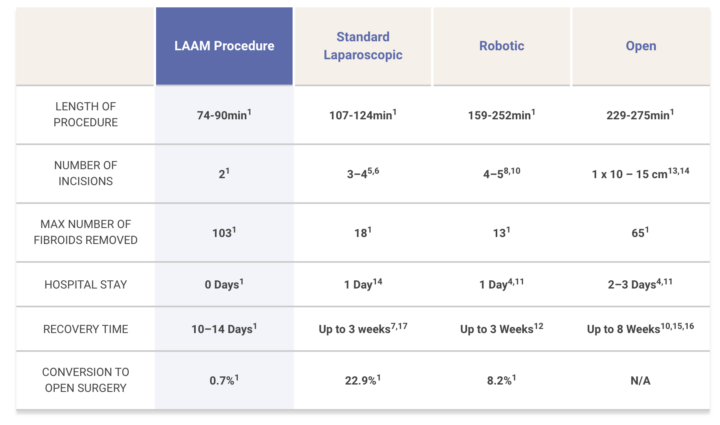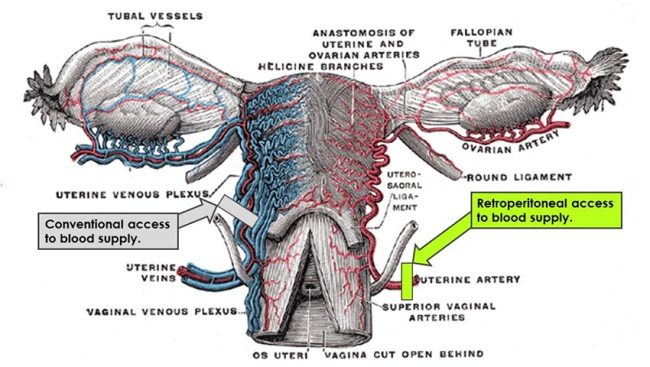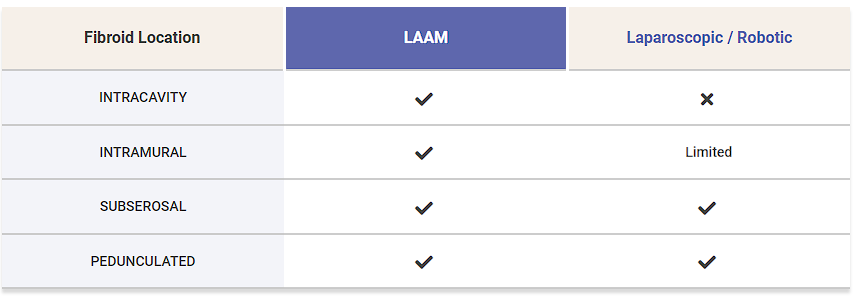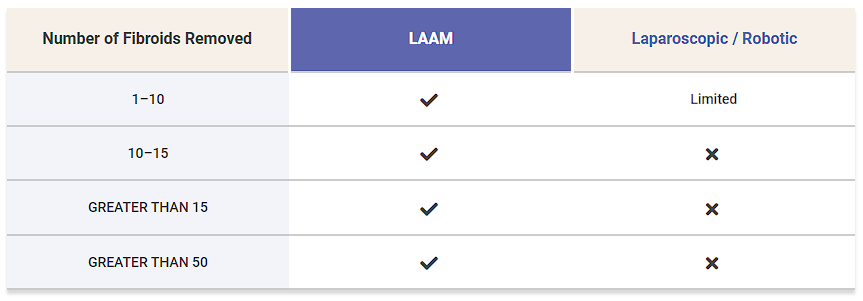Full List of References
1 Paul MacKoul, MD, FACOG, Rupen Baxi, MD, FACOG, Natalya Danilyants, MD, FACOG, Louise Q. van der Does, PhD, Leah R. Haworth, BSN, RN, Nilofar Kazi, BS. Laparoscopic-Assisted Myomectomy with Bilateral Uterine Artery Occlusion/Ligation. JMIG. 2019.
2 Bedient CE, Magrina JF, Noble BN, et al. Comparison of robotic and laparoscopic myomectomy. AJOG, 2009;201:566.e1-5.
3 Sangha R, Eisenstein D, George A, Munkarah A, Wegienka G. Comparison of surgical outcomes for robotic assisted laparoscopic myomectomy compared to abdominal myomectomy. JMIG, 2010; 17(Suppl):S108.
4 Barakat et al. Robotic-Assisted, Laparoscopic, and Abdominal Myomectomy: A Comparison of Surgical Outcomes. 2011; 117(2): 256-266.
5 Rossetti, A., Sizzi, O., Chiarotti, F., & Florio, G. (2007). Developments in techniques for laparoscopic myomectomy. JSLS. 11(1), 34-40.
6 Seinera et al. Laparoscopic myomectomy: indications, surgical technique and complications. Human Reproduction vol.12 no.9 pp.1927–1930, 1997.
7 Alessandri, Franco et al. Randomized study of laparoscopic versus minilaparotomic myomectomy for uterine myomas. JMIG. 2006; 13(2):92-97.
8 Advincula AP, Xu X, Goudeau S, Ransom SB. Robot-assisted laparoscopic myomectomy versus abdominal myomectomy: a comparison of short-term surgical outcomes and immediate costs. JMIG. 2007;14:698–705.
9 Sangha R, Eisenstein D, George A, Munkarah A,Wegienka G. Comparison of surgical outcomes for robotic assisted laparoscopic myomectomy compared to abdominal myomectomy. JMIG. 2010;17(Suppl):S108.
10 Asmar J, Even M, Carbonnel M, Goetgheluck J, Revaux A and Ayoubi JM (2015) Myomectomy by robotically assisted laparoscopic surgery: results at Foch Hospital, Paris. Front. Surg. 2:40,
11 Gobern JM, Rosemeyer CJ, Barter JF, Steren AJ. Comparison of robotic, laparoscopic, and abdominal myomectomy in a community hospital. JSLS. 2013;17(1):116-20.
12 Mayo Clinic
13 Yeung P, Bolden C et al. Patient Preferences of Cosmesis for Abdominal Incisions in Gynecologic Surgery. JMIG. 2013; 20(1): 79-84,
14 Jones, H. W., III, & Rock, J. A. (2015). Te Linde’s operative gynecology (Eleventh edition). Philadelphia: Wolters Kluwer.
15 MyHealth.Alberta.Ca
16 Guy’s and St Thomas’ NHS Foundation Trust
17 UNC Department of Obstetrics & Gynecology
Back to Top





